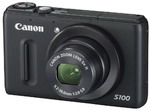Friday, April 6, 2007
Understanding and Calculating DPI/PPI
Posted by Jason Dunn in "THOUGHT" @ 07:00 AM
I tend to think of pixels like paint when I print them out - the amount of pixels is like the amount of paint you have. If you have a small amount of paint (say, 2 megapixels), that's enough to make a small painting (4x6" print) - but it's not enough paint to cover a huge canvas (13x19" print). The most paint (pixels) you have, the greater detail you'll have in an image, though there's a point of diminishing returns where having more pixels won't make your 4x6" print look any better. By the same token, there's a certain amount of paint you'll need in order to achieve good results on a canvas. In most cases, that's around 300 dpi (though I've seen great results at 200 dpi).
Digital photographer Matt Spinelli has a great explanation about PPI/DPI on his site, but more importantly he, has a PPI Calculator that can be used to figure out what PPI your image will be at. In the example above with my brother's images, the six megapixel image printed at 13 x 19" in size would only give us a DPI of 153. That's not quite high enough, so we used ACDSee Pro to up-sample the image to a higher DPI. There's no replacement for having more pixels to start with, but the results were still quite impressive when viewed at a realistic distance (no closer than two feet). Bookmark that PPI calculator and take the guesswork out of your printing - you can even use it if you're uploading to an online printing service (though they often will warn you if the image isn't high-resolution enough).












